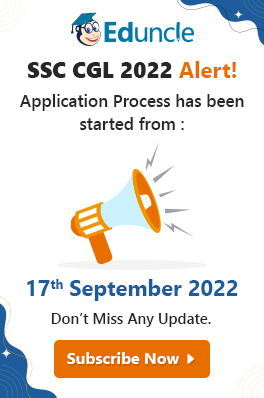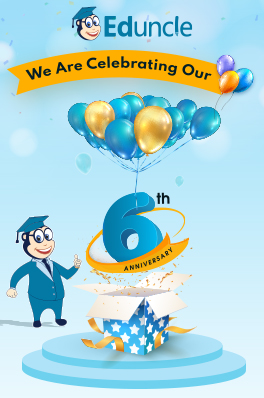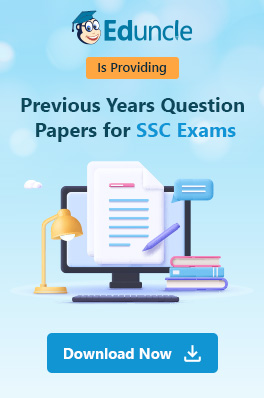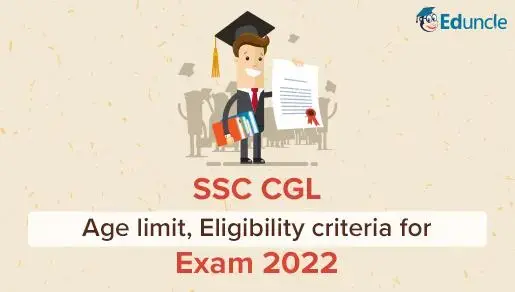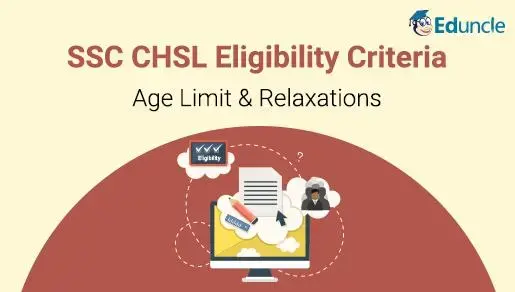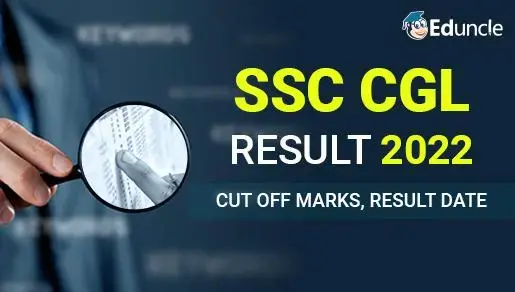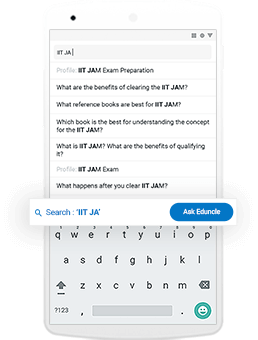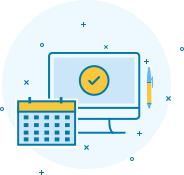
The Staff Selection Commission has released the Combined Graduate Level exam schedule to fill various group B and group C posts in government departments and ministries.
It is expected that SSC CGL 2022 will be held in December 2022. Aspirants preparing for the exam should focus on understanding the latest SSC CGL Syllabus 2022.
As per the revised exam pattern, SSC Combined Graduate Level Syllabus is now conducted in two phases – Tier 1 & Tier 2. So you must know the syllabus independently for both tiers.
In this article, we have provided the accurate SSC CGL 2022 Syllabus for Tier 1 & 2. Read further to know the complete syllabus.
SSC CGL Syllabus for All Tiers
Syllabus for SSC CGL Tier 1 Exam
SSC CGL Tier II Data Entry Speed Test
Get Free SSC CGL Study Material designed by Experts
SSC CGL 2022 Syllabus for All Tiers
SSC Exam is conducted in two phases - Tier 1 and Tier 2 in online mode.
The exam for Tier 1 is qualifying in nature and the final selection for different osts is based on Tier 2 exam. If you areappearing for the upcoming exam, you must know the complete SSC CGL Syllabus 2022.
Let's move further to know the complete details of SSC Combined Graduate Level Exam 2022 Syllabus.
SSC CGL 2022 Tier 1 Syllabus
Tier 1 is an objective paper which will be held online. The major sections asked in SSC CGL 2022 Tier - 1 Exam are General Awareness, Reasoning, Quantitative Aptitude and English Language.
The detailed SSC CGL Tier 1 syllabus for all the above-defined subjects is as follows: -
I. SSC CGL Tier 1 Syllabus for General Intelligence & Reasoning:
| Verbal Reasoning |
|
| S.No. |
Topics |
| 1. |
Analogies |
| 2. |
Problem Solving |
| 3. |
Judgment |
| 4. |
Decision Making |
| 5. |
Discrimination |
| 6. |
Relationship Concepts |
| 7. |
Mathematical Reasoning |
| 8. |
Coding & Decoding |
| 9. |
Statement Conclusion |
| 10. |
Syllogistic Reasoning |
| 11. |
Operations |
| 12. |
Venn Diagrams |
| 13. |
Address Matching |
| 14. |
Date & City Matching |
| 15. |
Numbers Coding |
| 16. |
Critical Thinking |
| 17. |
Series Problem |
| Non-Verbal Reasoning |
|
| S.No. |
Topics |
| 1. |
Analogies |
| 2. |
Similarities & Differences |
| 3. |
Space Visualization |
| 4. |
Spatial Orientation |
| 5. |
Analysis |
| 6. |
Non-Verbal Series |
| 7. |
Pattern- Folding |
| 8. |
Classification |
| 9. |
Embedded Figures |
| 10. |
Visual Memory |
| 11. |
Drawing Inferences |
Download Free SSC CGL Study Plan & Boost your Learning
II. SSC CGL Tier 1 Syllabus for English Language:
| S.No. | Topics |
| 1. | Improving Sentences |
| 2. | Spotting Errors |
| 3. | Synonyms & Antonyms |
| 4. | Fill in the Blanks |
| 5. | Active/ Passive Voice |
| 6. | Verbs |
| 7. | One-Word Substitution |
| 8. | Idioms & Phrases |
| 9. | Cloze Passage |
| 10. | Comprehension Passage |
III. SSC CGL Tier 1 Syllabus for Quantitative Aptitude:
| S.No. | Topics |
| 1. | Percentage |
| 2. | Ratio & Proportion |
| 3. | Square Roots |
| 4. | Averages |
| 5. | Interest |
| 6. | Profit & Loss |
| 7. | Discount |
| 8. | Partnership Business |
| 9. | Mixture & Alligation |
| 10. | Time & Distance |
| 11. | Time & Work |
| 12. | Basic Algebraic Identities |
| 13. | Graphs of Linear Equations |
| 14. | Triangle & Its Various Kinds of Centres |
| 15. | Congruence & Similarity of Triangles |
| 16. | Tangents |
| 17. | Angles Subtended by Chords of A Circle |
| 18. | Common Tangents to Two or More Circles |
| 19. | Triangle |
| 20. | Quadrilaterals |
| 21. | Regular Polygons |
| 22. | Circle |
| 23. | Right Prism |
| 24. | Right Circular Cone |
| 25. | Right Circular Cylinder |
| 26. | Sphere |
| 27. | Hemispheres |
| 28. | Rectangular Parallelepiped |
| 29. | Regular Right Pyramid with Triangular/ Square Base |
| 30. | Trigonometric Ratio |
| 31. | Degree & Radian Measures |
| 32. | Standard Identities |
| 33. | Complementary Angles |
| 34. | Heights & Distances |
| 35. | Histogram |
| 36. | Frequency Polygon |
| 37. | Bar Diagram & Pie Chart |
| 38. | Circle & Its Chords |
| 39. | Relationships Between Numbers |
IV. SSC CGL Tier 1 Syllabus for General Awareness:
| S.No. | Topics |
| 1. | History & Culture |
| 2. | Geography |
| 3. | Economic Scene |
| 4. | Indian Polity |
| 5. | General Policy & Scientific Research |
| 6. | Biology |
| 7. | Physics |
| 8. | Chemistry |
| 9. | Computer Section |
| 10. | Current Affairs |
| 11. | Current GK |
| 12. | Books & Authors |
| 13. | Persons & Place in News |
| 14. | Abbreviations |
SSC CGL Tier 2 Syllabus
As per the latest SSC CGL Notification, the exam pattern for the Tier 2 exam has been changed. The exam will include conducting Paper-I, Paper-II, and Paper-III in separate shift(s)/ day(s).
Paper-I is compulsory for all the posts, conducted in two sessions for the following three sections (having two modules each):
| Sections |
Modules |
| Section-I |
Module-I: Mathematical Abilities |
| Module II: Reasoning and General Intelligence. |
|
| Section-II |
Module-I: English Language and Comprehension |
| Module-II: General Awareness |
|
| Section-III |
Module-I: Computer Knowledge Test |
| Module-II: Data Entry Speed Test |
Paper-II Statistics
Paper-III General Studies (Finance and Economics)
Here at Eduncle, we have covered every detail of the latest SSC CGL 2022 Tier 2 exam syllabus.
SSC CGL Tier II Paper I Syllabus
Mathematical Abilities
| Module-I of Session-I of Paper-I |
| Number Systems |
| Computation of Whole Number, Decimal and Fractions, Relationship between numbers. |
| Fundamental arithmetical operations |
| Percentages, Ratio and Proportion, Square roots, Averages, Interest (Simple and Compound), Profit and Loss, Discount, Partnership Business, Mixture and Alligation, Time and distance, Time and work. |
| Algebra |
| Basic algebraic identities of School Algebra and Elementary surds (simple problems) and Graphs of Linear Equations. |
| Geometry |
| Familiarity with elementary geometric figures and facts: Triangle and its various kinds of centres, Congruence and similarity of triangles, Circle and its chords, tangents, angles subtended by chords of a circle, common tangents to two or more circles. |
| Mensuration |
| Triangle, Quadrilaterals, Regular Polygons, Circle, Right Prism, Right Circular Cone, Right Circular Cylinder, Sphere, Hemispheres, Rectangular Parallelepiped, Regular Right Pyramid with triangular or square Base. |
| Trigonometry |
| Trigonometry, Trigonometric ratios, Complementary angles, Height and distances (simple problems only) Standard Identities like sin2� + cos2�=1 etc. |
| Statistics and probability |
| Use of Tables and Graphs: Histogram, Frequency polygon, Bar-diagram, Pie-chart; Measures of central 21 tendency: mean, median, mode, standard deviation; calculation of simple probabilities. |
Join Us to Get Free Personalized Guidance by Subject Experts!
Reasoning and General Intelligence
| Module-II of Section-I of Paper-I |
| Questions of both verbal and non-verbal type. These will include questions on Semantic Analogy, Symbolic operations, Symbolic/ Number Analogy, Trends, Figural Analogy, Space Orientation, Semantic Classification, Venn Diagrams, Symbolic/ Number Classification, Drawing inferences, Figural Classification, Punched hole/ pattern-folding & unfolding, Semantic Series, Figural Pattern folding and completion, Number Series, Embedded figures, Figural Series, Critical Thinking, Problem Solving, Emotional Intelligence, Word Building, Social Intelligence, Coding and de-coding, Numerical operations, Other sub-topics, if any. |
English Language and Comprehension
| Module-I of Section-II of Paper-I |
| Vocabulary, grammar, sentence structure, synonyms, antonyms, and their correct usage; Spot the Error, fill in the Blanks, Synonyms/ Homonyms, Antonyms, Spellings/ Detecting mis-spelt words, Idioms & Phrases, one word substitution, Improvement of Sentences, Active/ Passive Voice of Verbs, Conversion into Direct/ Indirect narration, Shuffling of Sentence parts, Shuffling of Sentences in a passage, Cloze Passage, Comprehension Passage. To test comprehension, three or more paragraphs will be given, and questions based on those will be asked. At least one paragraph should be a simple one based on a book or a story and the other two paragraphs should be on current affairs, based on a report or an editorial. |
General Awareness
| Module-II of Section-II of Paper-I |
| Questions are designed to test the candidates’ general awareness of the environment around them and its application to society. Questions are also designed to test knowledge of current events and of such matters of everyday observation and experience in their scientific aspect as may be expected of an educated person. The test will also include questions relating to India and its neighbouring countries especially pertaining to History, Culture, Geography, Economic Scene, General policy and scientific research. |
Computer Proficiency
| Module-I of Section-III of Paper-I |
| Computer Basics |
| Organization of a computer, Central Processing Unit (CPU), input/ output devices, computer memory, memory organization, back- up devices, PORTs, Windows Explorer. Keyboard shortcuts. |
| Software |
| Windows Operating system including basics of Microsoft Office like MS word, MS Excel, and Power Point etc. |
| Working with Internet and e-mails |
| Web Browsing & Searching, Downloading & Uploading, Managing an E-mail Account, e-Banking. |
| Basics of networking and cyber security |
| Networking devices and protocols, Network, and information security threats (like hacking, virus, worms, Trojan etc.) and preventive measures. |
SSC CGL Tier II Syllabus of Paper II
Candidates who are interested in applying for Junior Statistical Officer (JSO) positions at the Ministry of Statistics and Program Implementation should take Paper II.
Find the detailed syllabus of SSC CGL Tier II of Paper II (Statistics):
Statistics
| Paper-II |
| Collection, Classification and Presentation of Statistical Data |
| Primary and Secondary data, Methods of data collection; Tabulation of data; Graphs and charts; Frequency distributions; Diagrammatic presentation of frequency distributions. |
| Measures of Central Tendency |
| Common measures of central tendency – mean median and mode; Partition values- quartiles, deciles, percentiles. |
| Measures of Dispersion |
| Common measures dispersion – range, quartile deviations, mean deviation and standard deviation; Measures of relative dispersion. |
| Moments, Skewness and Kurtosis |
| Different types of moments and their relationship; meaning of skewness and kurtosis; different measures of skewness and kurtosis. |
| Correlation and Regression |
| Scatter diagram; simple correlation coefficient; simple regression lines; Spearman’s rank correlation; Measures of association of attributes; Multiple regression; Multiple and partial correlation (For three variables only). |
| Probability Theory |
| Meaning of probability; Different definitions of probability; Conditional probability; Compound probability; Independent events; Bayes’ theorem. |
| Random Variable and Probability Distributions |
| Random variable; Probability functions; Expectation and Variance of a random variable; Higher moments of a random variable; Binomial, Poisson, Normal and Exponential distributions; Joint distribution of two random variable (discrete). |
| Sampling Theory |
| Concept of population and sample; Parameter and statistic, Sampling and non-sampling errors; Probability and nonprobability sampling techniques (simple random sampling, stratified sampling, multistage sampling, multiphase sampling, cluster sampling, systematic sampling, purposive sampling, convenience sampling and quota sampling); Sampling distribution (statement only); Sample size decisions. |
| Statistical Inference |
| Point estimation and interval estimation, Properties of a good estimator, Methods of estimation (Moment’s method, Maximum likelihood method, Least squares method), Testing of hypothesis, Basic concept of testing, Small sample and large sample tests, Tests based on Z, t, Chi-square and F statistic, Confidence intervals. |
| Analysis of Variance |
| Analysis of one-way classified data and two way classified data. |
| Time Series Analysis |
| Components of time series, Determinations of trend component by different methods, Measurement of seasonal variation by different methods. |
| Index Numbers |
| Meaning of Index Numbers, Problems in the construction of index numbers, Types of index number, Different formulae, Base shifting and splicing of index numbers, Cost of living Index Numbers, Uses of Index Numbers. |
Free Download SSC CGL Sample Study Notes
SSC CGL Tier II Syllabus of Paper III
Candidates who apply for the positions of Assistant Audit Officer and Assistant Accounts Officer will appear for Paper III. In this paper, question will be asked from General Studies, Finance & Economics:
General Studies-Finance and Economics
| Part A of Paper II: Finance and Accounts of Paper-II |
| Fundamental principles and basic concept of Accounting |
| Financial Accounting: Nature and scope, Limitations of Financial Accounting, Basic concepts and Conventions, Generally Accepted Accounting Principles. Basic concepts of accounting: Single and double entry, Books of original Entry, Bank Reconciliation, Journal, ledgers, Trial Balance, Rectification of Errors, Manufacturing, Trading, Profit & loss Appropriation Accounts, Balance Sheet Distinction between Capital and Revenue Expenditure, Depreciation Accounting, Valuation of Inventories, Non-profit organisations Accounts, Receipts and Payments and Income & Expenditure Accounts, Bills of Exchange, Self-Balancing Ledgers. |
| Part B: Economics and Governance |
| Comptroller & Auditor General of India |
| Constitutional provisions, Role, and responsibility. |
| Finance Commission |
| Role and functions. |
| Basic Concept of Economics and introduction to Micro Economics: |
| Definition, scope and nature of Economics, Methods of economic study and Central problems of an economy and Production possibilities curve. |
| Theory of Demand and Supply: |
| Meaning and determinants of demand, Law of demand and Elasticity of demand, Price, income and cross elasticity; Theory of consumer’s behaviourMarshallian approach and Indifference curve approach, Meaning and determinants of supply, Law of supply and Elasticity of Supply. |
| Theory of Production and cost |
| Meaning and Factors of production; Laws of production- Law of variable proportions and Laws of returns to scale. |
| Forms of Market and price determination in different markets |
| Various forms of markets-Perfect Competition, Monopoly, Monopolistic Competition and Oligopoly and Price determination in these markets. |
| Indian Economy |
| Nature of the Indian Economy Role of different sectorsRole of Agriculture, Industry and Services-their problems and growth National Income of India-Concepts of national income, Different methods of measuring national income. Population-Its size, rate of growth and its implication on economic growth. Poverty and unemployment- Absolute and relative poverty, types, causes and incidence of unemployment Infrastructure-Energy, Transportation, Communication |
| Economic Reforms in India |
| Economic reforms since 1991; Liberalisation, Privatisation, Globalisation and Disinvestment. |
| Money and Banking |
| Monetary/ Fiscal policy- Role and functions of Reserve Bank of India; functions of commercial Banks/RRB/Payment Banks. Budget and Fiscal deficits and Balance of payments. Fiscal Responsibility and Budget Management Act, 2003 |
| Role of Information Technology in Governance. |
| Questions in Module-I of Section- I of Paper-I (Mathematical Abilities) will be of Matriculation Level, in Module-I of Section- II of Paper-I (English Language and Comprehension) of 10+2 Level and in Paper-II and Paper-III of Graduation Level. |
SSC CGL Syllabus Tier 2 Module-II of Section-III of Paper-I- Data Entry Speed Test
Module-II of Section-III of Paper-I will include conducting of a Data Entry Speed Test (DEST) for a duration of 15 minutes in Session-II on the same day. This section aims to judge a candidate’s personality traits, communication skills, and leadership skills, in addition to his/her academic knowledge.
The Data Entry Speed Test will be conducted for passage of about 2000 key depressions for a duration of 15 minutes.
DEST will be mandatory for all the posts; however it will be qualifying in nature.
| Download Free SSC CGL Material for All Subjects [Trusted & Recommended by 4600+ Selected Students] |
| Updated Syllabus for All Subjects |
| Sample Theory Notes |
| Model Test Papers with Solution (Paper 1 & 2) |
| 5 Previous Exam Papers with Answer Keys |
| Complete Study Plan for Paper 1 |
| Paper Analysis by Eduncle Experts |
| Personalized Guidance by Subject Experts |
When it comes to finding the syllabus for competitive exams like SSC, online, it becomes a tedious activity and the aspirant in search of latest and well-defined syllabus lose focus from his main goal.
Eduncle has always tried to make the learning process a lot easier and simpler for students. By defining the updated syllabus for SSC CGL 2022, candidates can save their valuable time which they spend in collecting syllabus details from different sources.
The above-given syllabus includes all the important topics that have to be prepared by you in order to score well in the SSC CGL Exam 2022.
Comment your views and queries, if you have any. We are here to help you.
Thank You!!

